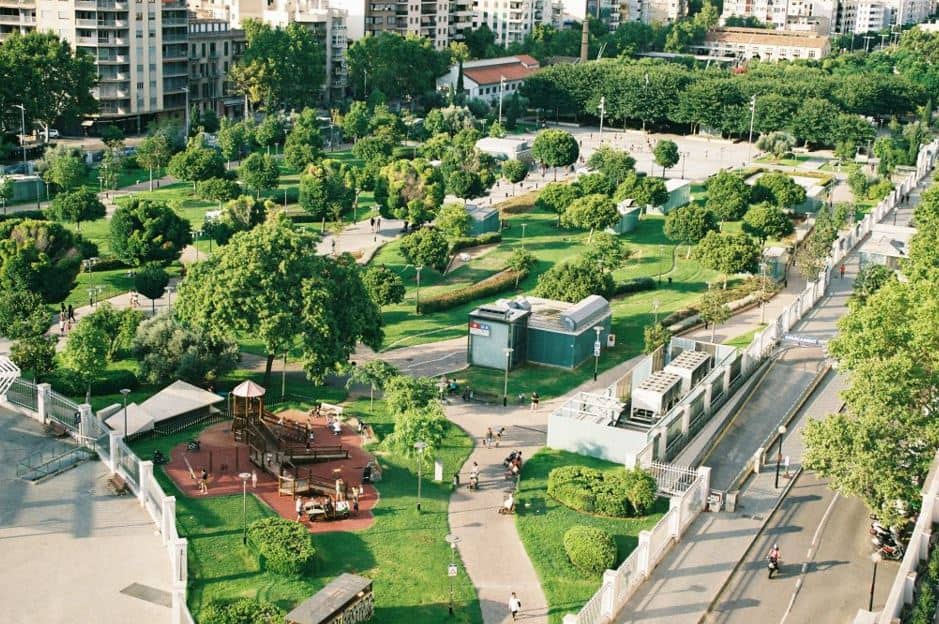Nigeria, the most populous nation in Africa, pulsates with vibrant energy and immense potential. However, beneath this effervescence lies a hidden threat – a shroud of unhealthy air that silently permeates the lives of its citizens. In this article, we aim to explore air quality in Nigeria, the true situation in our streets, and a way to make the air we breathe better.
An estimated 4.2 million premature deaths annually, worldwide, are attributed to ambient air (outdoor air quality) pollution exposure, primarily arising from fine particulate matter. This problem manifests through a spectrum of cardiovascular and respiratory ailments, including cancers. In 2019, the World Health Organization (WHO) reported that ischaemic heart disease and stroke accounted for 37% of outdoor air pollution-related deaths, followed by chronic obstructive pulmonary disease (18%) and acute lower respiratory infections (23%). Notably, 11% of fatalities were attributed to respiratory tract cancers.
Low- and middle-income countries disproportionately bear the brunt of this crisis, with 89% of the annual 4.2 million premature deaths occurring within their borders (WHO, 2019). Several African nations, including Nigeria, face a growing concern: worsening air quality due to increasing pollution.
The 2019 global air quality assessment by the Health Effects Institute paints a stark picture, placing Nigeria as the most polluted nation in Africa and the fourth worst globally. This translates to a tragic mortality rate of 1500 deaths per million people annually, directly attributable to air pollution (Health Effects Institute, 2019).
According to several researchers, this situation is worse in the urban areas of Nigeria, with vehicle emissions, generator fumes, and dust generated by construction sites identified as the primary contributors to air pollution. Cities like Lagos, Ibadan, Kano, Kaduna, Port Harcourt, and the Niger Delta region suffer from particularly high concentrations of common air pollutants.
Furthermore, these urban centres routinely exceed the World Health Organization’s (WHO) hourly average standards for particulate matter (PM), a key indicator of air quality. This exposes residents to dangerously high levels of pollutants, posing a significant threat to their health and well-being.
Air Quality Index (AQI)
The air we breathe is not always as simple as it seems. To help us understand its purity, government agencies employ a tool called the Air Quality Index (AQI). This index acts as a yardstick, measuring the current or predicted level of air pollution in a given area.
Think of the AQI as a scale ranging from 0 to 500. The higher the number, the greater the level of air pollution and the potential health risks associated with it. A score of 50 or below indicates good air quality, while anything exceeding 300 signifies dangerously polluted air.
Each pollutant contributing to the AQI has a designated threshold – an air concentration at which it poses a threat to public health. When the AQI for a specific pollutant reaches 100, it signifies that concentration has been attained. Values above 100 indicate increasingly unhealthy air for everyone, with sensitive groups like children and the elderly experiencing the first impacts.
For ease of understanding, the AQI is divided into six colour-coded categories. Each category reflects a different level of air pollution and associated health risks. This colour-coding system allows people to quickly grasp the air quality in their community and make informed decisions about outdoor activities.

According to iqair.com, the current air quality index for Lagos Nigeria is 167 (22nd January, 2023), which is unhealthy. The main air pollutant is PM2.5 (particulate matter less than 2.5 micrometres in diameter), whose concentration in Lagos is currently 17.4 times the WHO annual air quality guideline value. In Kano, the current air quality index is 112, in Port Harcourt 152, and Enugu 171.
According to the WHO, the major pollutants usually checked for are particulate matter (PM), carbon monoxide (CO), Ozone (O3), Nitrogen Dioxide (NO2), and Sulfur Dioxide (SO3).

A recent study (2023), published in the journal Atmospheric Environment, undertook a comprehensive evaluation of the atmospheric concentrations of tropospheric nitrogen dioxide (NO2), carbon monoxide (CO), ozone (O3), and Aerosol Index (AI) across nine major Nigerian cities. This analysis also encompassed the assessment of key meteorological parameters, including atmospheric temperature (AT), relative humidity (RH), and wind speed (WS). The cities studied included Aba, Benin, Ibadan, Kaduna, Kano, Lagos, Onitsha, Port Harcourt, and Umuahia.
A group descriptive analysis of the study’s findings revealed significant disparities in average air pollutant concentrations across the nine cities. Notably, Aba, Onitsha, and Kano exhibited a preponderance of high nitrogen dioxide (NO2) values compared to other locations. Lagos emerged as the frontrunner with the highest average NO2 concentration, underscoring the urgent need for targeted pollution mitigation strategies in densely populated urban centres.
An additional observation was the divergence in carbon monoxide (CO) and aerosol index (AI) levels. Kano registered the highest values in both these categories, while Kaduna presented a contrasting picture with comparatively lower pollution indices. This disparity suggests that local emission sources and atmospheric dynamics, independent of economic development, may exert a decisive influence on ozone (O3) levels. Notably, Kaduna displayed the lowest O3 content among the analyzed cities.
Higher concentrations of tropospheric NO2 and O3 were observed in Aba, Port Harcourt, and Umuahia. However, a dip in NO2 levels was detected in northern Onitsha, Umuahia, and southern Kaduna, highlighting the influence of local pollution or environmental factors. Furthermore, cities situated near the coast exhibited relatively lower O3 levels, suggesting a dampening effect by coastal breezes.
Interestingly, regional variations in O3 concentrations were less evident across the research locations. Tropospheric CO concentrations displayed restricted dispersion, with minor increases documented in Benin, Port Harcourt, and Umuahia. The remaining cities exhibited similar CO levels, though southern Benin and Port Harcourt presented slightly higher values. This localized increase in CO necessitates further exploration of potential emission sources. Finally, the presence of elevated AI concentrations in Aba, Benin, Kaduna, Lagos, Onitsha, Port Harcourt, and Umuahia points towards distinct clusters of pollution.
The Grim Reality of Air Pollution
The consequences of this polluted air are very worrisome. Nigeria consistently ranks among the most polluted countries globally, with major cities like Lagos, Port Harcourt, and Kano regularly exceeding safe air quality standards. This translates to significant health problems such as:
- Respiratory illnesses: Air pollution exacerbates asthma, chronic obstructive pulmonary disease (COPD), and respiratory infections, impacting children and the elderly.
- Cardiovascular diseases: Fine particulate matter can enter the bloodstream, contributing to heart disease, stroke, and other cardiovascular issues.
- Cognitive decline: Studies suggest a link between air pollution and impaired cognitive function, including dementia and Alzheimer’s disease.
Mapping the Terrain
Understanding the spatial and temporal variations in air quality is crucial for targeted interventions. Factors influencing these variations include:
- Geography and meteorology: Topography, wind patterns, and temperature inversions can trap pollutants in specific regions, worsening local air quality issues.
- Urbanization and industrial activity: Densely populated cities and industrial hubs tend to have higher pollution levels due to concentrated sources of emissions.
- Seasonal variations: Dry seasons often see increased dust and agricultural burning, leading to spikes in PM concentrations.
Navigating Different Solutions
The rapid expansion of many cities, while fostering economic vitality, presents a significant environmental challenge – air pollution. To successfully navigate this nexus of progress and peril, policymakers in these urban centres must adopt a multifaceted approach. Some of them are highlighted below;
Prioritizing Comprehensive Monitoring: At the forefront of this response lies the establishment of robust air quality monitoring networks. These networks, with strategic sensor placements, will meticulously track pollutant levels, enabling the identification of pollution hotspots. Armed with this data, targeted interventions can be implemented, focusing on areas posing the greatest health risks.
Embracing Green Design Principles: Urban planning must undergo a paradigm shift, embracing green and sustainable design principles. This necessitates the incorporation of measures such as extensive green spaces, walkable urban planning, and mixed-use land development. These interventions directly tackle pollution sources, reducing automobile dependence and fostering healthier living environments.
Curbing Emissions at the Source: Stringent emissions regulations encompassing both industrial and transportation sectors are essential. Implementing technological advancements in pollution control measures must be prioritized while incentivizing the adoption of cleaner fuels and emission-free transportation alternatives. These collective efforts will demonstrably reduce pollutant emissions, safeguarding the health and well-being of urban residents.
Balancing Growth with Environmental Consciousness: The delicate balance between economic prosperity and environmental sustainability lies at the heart of urban policy formulation. Policymakers must recognize that unfettered economic expansion often has detrimental environmental consequences. Therefore, stringent environmental regulations should be meticulously formulated and enforced, ensuring that economic initiatives are balanced with a commensurate commitment to protecting air quality.
Sustainable Urban Design: A Long-Term Imperative: Long-term sustainability should be the focus of urban design strategies. Green spaces, including parks and community gardens, must be woven into the urban fabric, acting as natural air filters and promoting active lifestyles.

Public transportation systems must be expanded and optimized, minimizing reliance on private vehicles and reducing emissions. Encouraging mixed-use zoning promotes walkability and fosters vibrant and cohesive communities, further decreasing dependence on personal transportation.
Preserving Nature: The invaluable role of natural green areas cannot be overstated. Existing natural areas within and around cities must be protected, while urban tree-planting initiatives should be actively pursued. These verdant corridors effectively absorb pollutants, providing a vital defence against the onslaught of urban air pollution.
By embracing these policy imperatives and prioritizing a multifaceted approach, urban policymakers can ensure that their rapidly evolving cities become not only engines of economic growth but also havens of clean air and sustainable living. This is the challenge of our time, and the choices made today will determine the air we breathe tomorrow.
Going Forward
Improving outdoor air quality in Nigeria is a complex challenge, but not an insurmountable one. By acknowledging the gravity of the situation, understanding the multifaceted nature of the problem, and implementing effective solutions at various levels, Nigeria can strive for a future where its citizens breathe not just air, but the promise of a healthier, more vibrant life.



